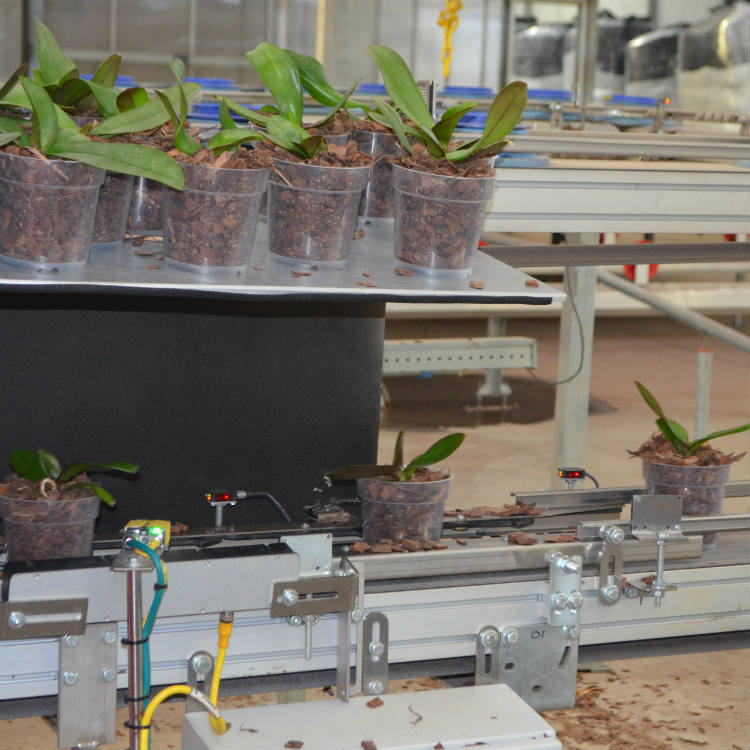
When you hear about robots coming into the workforce, it’s usually followed by a conversation about how many jobs they’re replacing and how they’re eventually going to take over the world.
That may be a real fear in some industries, but in our greenhouse, robots and growers coexist peacefully. Automation has greatly improved some aspects of our growing process, but there are some things you just can’t automate.
Here’s a look at how we’re using greenhouse robots to improve our growing process and deliver a better product to customers like you.
Greenhouse operations involve a lot of heavy lifting. We move entire tables of plants from one section of our greenhouse to another as they grow. They often need a specific environment depending on their life cycle. For instance, we place orchids in a cooler section of our greenhouse to trigger blooming. (It’s where the magic happens!)
We also move plants so they can be tested for quality, resistance to pests and disease, and other factors. We use large, robotic trains to handle the heavy lifting. Spacing is also critical. Some of our potted plants sit on our greenhouse floor, where they are watered from below rather than from above. If these plants are placed too close together, their growth will be stunted or uneven. Using greenhouse robots (that look a little like R2D2 in Star Wars), we can easily place plants just the right distance apart.
Having the right growing environment is critical. Greenhouses are influenced by weather factors like sunlight and temperature, so we need to be able to control how much light we let in. We have several layers of curtains that allow us to add or reduce sunlight gradually by opening them. We use a greenhouse automation system that allows our growers to open or close curtains at a moment’s notice so we can maintain the right temperature, humidity and lighting at all times.
Our greenhouse team is serious about quality control. We monitor our plants as they grow to ensure they reach growth milestones at the same time. This ensures they have a consistent appearance and will stay in bloom for two to three months, no matter where or when you purchased them. We also test our plants for resistance to common diseases and pests.
We have a fantastic quality control team who manages this, but when you produce more than 8 million orchids a year, it’s impossible for even a large group of employees to visually inspect every plant as it grows. To make our quality control process more efficient and effective, we use technology that scans every plant and measures it against pre-set growth standards. If a plant meets its growth milestones, it goes onto a conveyor belt to “graduate” to the next stage of growth. If it falls short, the machine sends it back to continue growing.
Greenhouse robots aren’t cheap, but the return on the investment is significant. Within a few minutes, a greenhouse robot can move hundreds of plants—a task that would take a single employee most of their workday.
Finding ways to automate some of these highly repetitive tasks allows us to control our costs and pass those savings to our customers. It also creates a better work environment. Rather than relying on our employees for hundreds of tedious tasks, we can put them to work in more fulfilling ways — like testing the latest variety of anthuriums.
Greenhouse robots are becoming common in large-scale operations like ours. They allow us to be more efficient, control quality and keep costs in check.
However, robots are no substitute for the expertise of our growers, some of whom have been with us for decades. They bring a level of practical knowledge, critical thinking and creativity that no robot can replicate.

Copyright Just Add Ice® Orchids 2023